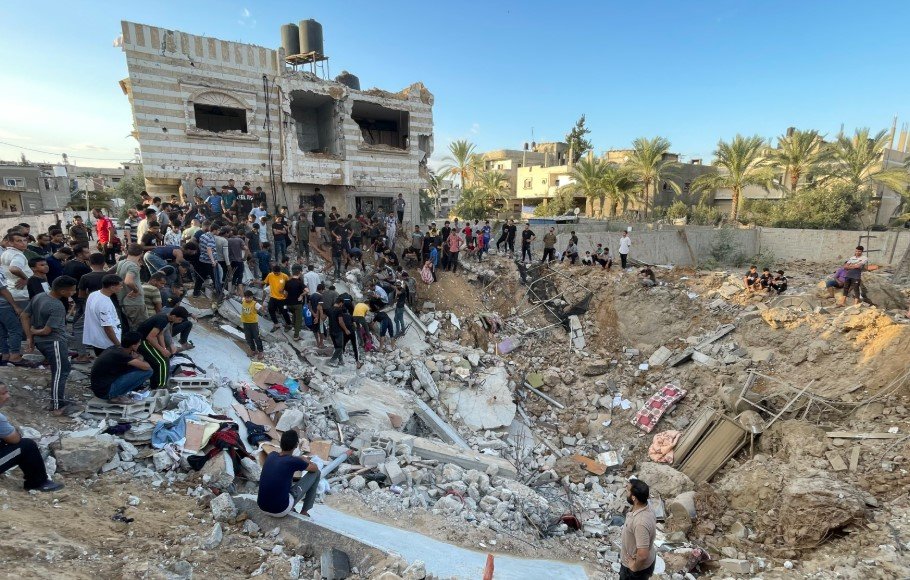The latest round of Israeli airstrikes across Gaza has claimed the lives of at least 60 Palestinians, according to local health officials. The intensifying offensive aims to cripple Hamas and recover hostages, but has plunged the Gaza Strip into further turmoil amid an ongoing humanitarian crisis.
Netanyahu’s government has permitted a limited number of aid trucks into Gaza, ending a 2 ½ month blockade, yet the small convoy falls far short of the urgent needs of Gaza’s two million residents. With families sheltering in schools and homes, the death toll from recent strikes underscores the heavy civilian toll in this conflict.
Rising Death Toll in Residential Areas
In northern Gaza, two devastating strikes hit a family home and a school repurposed as a shelter. The Gaza Health Ministry reports that these attacks killed at least 22 people, over half of whom were women and children. The nature of the targets—residential and civilian refuge locations—has drawn international concern and outcry.
Meanwhile, the central city of Deir al-Balah witnessed a strike that killed 13 people, and nearby, the Nuseirat refugee camp experienced another attack that claimed 15 lives, as confirmed by the Al-Aqsa Martyrs Hospital. The pattern of strikes on densely populated civilian zones highlights the staggering human cost of the campaign.

Aid Shortages Worsen Fears of Famine
Prime Minister Benjamin Netanyahu’s recent decision to allow aid trucks into Gaza marked a shift after months of tight blockade. But relief efforts remain insufficient. The United Nations has emphasized that the handful of aid convoys entering Gaza daily is a fraction of what is needed. During a ceasefire earlier this year, some 600 trucks were permitted daily, illustrating the drastic reduction in humanitarian supplies now reaching the population.
The situation is especially dire given that Gaza’s infrastructure and medical facilities are overwhelmed. Hospitals report shortages in medicine and supplies as casualties mount. The blockade’s impact on food availability has also sparked widespread fears of famine among Gaza’s residents.
The Hostage Crisis and Military Objectives
Israel says its offensive seeks to recover dozens of hostages held by Hamas militants in Gaza. The group has been a central focus of the conflict, accused by Israel and its allies of orchestrating attacks and holding captives.
Prime Minister Netanyahu’s government, facing internal and international pressure, has been doubling down on military efforts. However, these operations have also heightened tensions and drawn criticism over the civilian casualties and worsening humanitarian conditions.
The Conflict’s Broader Implications
The ongoing violence in Gaza has reignited debates over the proportionality of military actions and the protection of civilians during conflict. While Israel maintains its right to self-defense and hostage recovery, humanitarian groups and global actors urge restraint and expanded aid access.
As the offensive continues, Gaza’s population finds itself trapped between escalating strikes and severe shortages of essentials. The deaths reported so far paint a grim picture of a conflict exacting a heavy toll on ordinary lives.
| Location | Reported Deaths | Notes |
|---|---|---|
| Northern Gaza | 22 | Includes strikes on home & shelter |
| Deir al-Balah | 13 | Central city strike |
| Nuseirat Refugee Camp | 15 | Refugee camp strike |
This table summarizes the fatalities reported from recent Israeli strikes in Gaza.
The humanitarian crisis and death toll have sparked urgent calls for renewed ceasefires and diplomatic efforts, but as violence rages on, the prospects remain uncertain.
